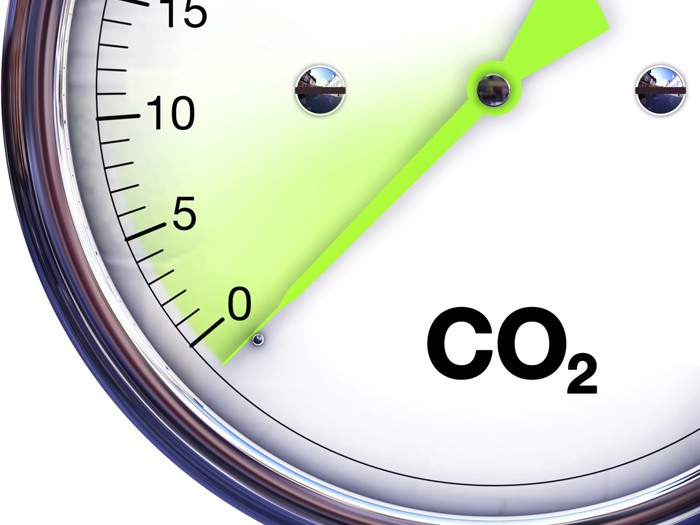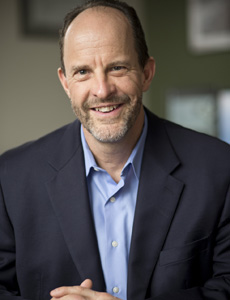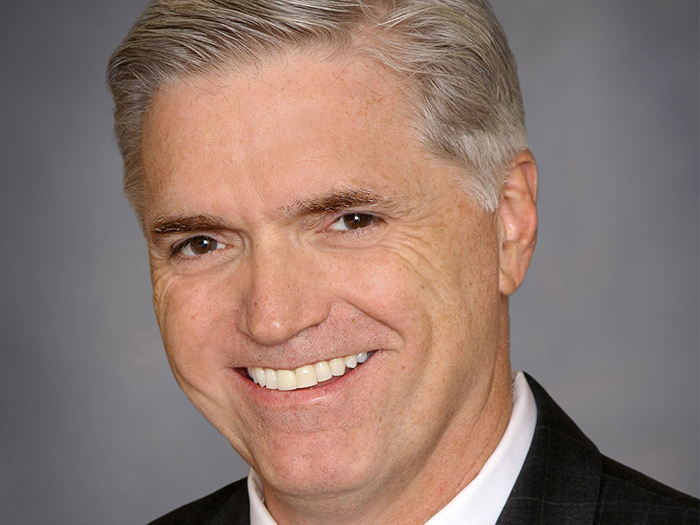Climate Change
On the Front Lines

As the United Nation’s Paris Climate Conference results are debated, some in the insurance industry have taken leadership roles in advocating for change while working with clients to address the problem.
At least nine insurers have been cited by Ceres – a nonprofit organization founded by investors, companies, and environmental public interest groups after the Exxon Valdez oil spill – for providing leadership in the battle to manage climate change.
Insurers and reinsurers, after all, are on the front lines of providing financial recovery after hurricanes, floods, wildfires, tornadoes and winter storms, which many in the scientific community believe are increasing due to high levels of carbon dioxide in the atmosphere.
“As we learn more and more things about the fragile environment we live in, we have an obligation to take action.” — Joseph L. Boren, chairman of the environmental product line, Ironshore Holdings (U.S.) Inc.
“As we learn more and more things about the fragile environment we live in, we have an obligation to take action,” said Joseph L. Boren, chairman of the environmental product line at Ironshore Holdings (U.S.) Inc.
Insurers at the forefront of action are developing risk models as a way to stay ahead of change – as well as reducing their own organization’s carbon footprint. They are involved in discussions about climate change initiatives, and they are working on ways to promote or favor clean energy use among clients.
Need to Adapt
Until now, the industry has largely seen climate change through the prism of extreme weather events, said Frank Nutter, president of the Reinsurance Association of America (RAA).
“When [insurers] think about what they should do about climate change or extreme weather events, they will focus on ways to reduce those losses,” he said, through advocating for building code changes or adjusting their insurance capacity in risk-prone regions.
“Adaptation is the name of the game.”
But more and more, insurers and industry groups are choosing to take on an advocacy stance, he said.

Mark Way, senior vice president and head of sustainable development in the Americas, Swiss Re
The RAA works closely with a number of environmental groups such as the National Wildlife Federation and the Nature Conservancy on ways it can support local communities to preserve natural habitats as a way to reduce losses.
“Natural habitats tend to impact the potential consequences of storm surge or extreme weather — the Mississippi Delta around New Orleans would be a good example of that,” he said.
While Swiss Re does not engage lobbyists to work on the issue, it does regularly converse with individuals “at various levels of government, up and down the chain within the industry and outside the industry” on climate change issues, said Mark Way, senior vice president and head of sustainable development in the Americas.
Follow the Water
Louis Gritzo, vice president of research for FM Global, said companies must “follow the water” to understand the risks.
In addition to polar and glacial ice melting causing sea levels to rise – which has been more significant in the Gulf and the Southeast – there’s also been an increase in the intensity (but not the frequency) of rainstorms in North America overall, he said.
Half the U.S. is within one county of the coastline or the Great Lakes, yet development and infrastructure continues to increase in such exposed areas, he said.
“One thing that Superstorm Sandy proved was that multiple ways of preventing flood damage were needed,” Gritzo said.
Sandy caused an unprecedented 14-foot storm surge, eclipsing the 10-foot record set in 1960, and resulted in more than $68 billion in total losses (over $29 billion in insured losses) and 210 deaths.
Billion Dollar Risks
Climate concerns can be split into three categories: higher sea levels, warmer climates and extreme heat, according to The Risky Business Project, a nonpartisan nonprofit founded to understand and communicate the impact of climate change on U.S. business.
In the next 15 years, U.S. coastal areas may see up to $35 billion in damage each year because of higher sea levels and storm surges from hurricanes and other storms, according to the group’s report done in conjunction with the economic research firm Rhodium Group, which specializes in analyzing disruptive global trends; Risk Management Solutions (RMS); and leading climate scientists.
In 2050, “between $66 billion and $106 billion worth of existing coastal property will likely be below sea level nationwide, with $238 billion to $507 billion worth of property below sea level by 2100,” the report predicted.
The sea level rises will be higher on average along the Southeast and Atlantic coasts.
As for warmer climates, it could lead to a loss of 10 percent in crop yields for corn, wheat, soy and cotton in the Midwest and South during the next five to 25 years if farmers can’t adapt.
At the same time, farmers further north and in the Great Plains may see an increase in productivity for these crops but these shifts will have an adverse impact on individual farming communities most vulnerable to projected climatic changes, it said.
“We try very hard to pay close attention to how our business operates in economic and also in social responsibility [terms].” –Jay Bruns, vice president for public policy and corporate responsibility, The Hartford
Extreme heat, the third focus, especially in the Southwest, Southeast, and Upper Midwest, will threaten labor productivity, human health and energy systems, according to the Risky Business Project.
By the middle of this century, the number of days with temperatures over 95 degrees Fahrenheit will double or triple the 30-year average. That will increase demand on regional power generation, as air conditioning becomes a necessity for larger parts of the country. It also may threaten the health and productivity of outdoor workers.
“The project has not called for specific action related to climate,” Nutter said, “but they have recognized that our government often struggles to deal with this issue and private industry [is] often doing a lot to protect their own property, to look at their own footprint.
“They just recognize that this is an issue that … the business community could be and, in some cases, is already dealing with proactively. They put a lot of resources behind the need to do more.”
Changing a Risky Future
Swiss Re got involved with climate change risk assessment and advocacy some 25 years ago, said Way.
Since then, the company has been examining the impact made by its own company as well as the risks of society as a whole.
“We’ve been looking at what kind of products would be most appropriate to either deal with the severe weather impacts or the transition from a high- to a low-carbon economy, so you have things like insurance for renewable energy and clean technologies,” he said.
The company also has regular discussions with clients and shares examples of what can be done about climate change.
It actively encourages corporations to participate in carbon-reduction/carbon-neutral programs, and it, along with three dozen or so companies, including Ikea, Walmart, Starbucks and P&G, have committed to reaching a goal of 100 percent renewable energy for their power requirements.
The Hartford also tries to lead on the issue through advocacy and customer programs.
“We try very hard to pay close attention to how our business operates in economic and also in social responsibility [terms],” said Jay Bruns, The Hartford’s vice president for public policy and corporate responsibility.
To help clients become more sustainable, The Hartford offers a wide variety of credits, discounts and additional coverages for hybrid and electric vehicles, energy-efficient building materials and equipment, renewable energy equipment, and other green-friendly initiatives.
Like Swiss Re and others, The Hartford sees its own efforts to reduce carbon use as important in taking a leadership role, as well as making its own business more sustainable.
The company set an initial goal of reducing its operation’s greenhouse gases by 15 percent from 2007 to 2017, but met that goal in just three years and subsequently met two more reduction goals. As of 2014, The Hartford managed to reduce its emissions by 50 percent.
Swiss Re launched a Greenhouse Neutral Program in 2003 to commit “to going carbon neutral, which we’ve actually been since 2007,” Way said.
“We also have a program called COYOU2 which [provides a] financial subsidy to our staff if they want to invest in low carbon technology, such as an electric or hybrid car, solar heating, installing [high efficiency] windows,” and other items.
Reducing the Carbon Footprint
FM Global cites its engineer-driven underwriting and risk management solutions and property loss prevention research as a way to help clients address their carbon footprint.

Louis Gritzo, vice president of research, FM Global
“We were the first ones to have loss prevention guidance for green roofs and we have [had those] for solar panels and wind turbines for a long time,” said Gritzo.
“If you want a green building to be really green, it has to last. It has to not just be sustainable in terms of the energy use but it has to be able to withstand typical fire and emissions hazards and natural hazards in the area.
“An enterprise risk management strategy should have a response plan for every hazard for which [the company is] subjected, as well as supply chain analysis, and [a plan for] working with local authorities so people managing facilities in certain locations can understand what local authorities can and can’t do.
“When a catastrophe hits, it’s not the time to be swapping business cards,” said Gritzo.
“You need to have relationships with local authorities before [the catastrophe], whether it is a flood or a windstorm.”
Ceres recommends several steps for insurers and their clients:
• Implement climate risk oversight at the board and C-suite levels;
• Integrate climate risk into ERM frameworks;
• Deepen understanding of climate change scenarios and impacts;
• Engage with key stakeholders (including policyholders) on climate risk;
• Participate in joint industry initiatives on climate risk;
• Integrate climate change considerations into catastrophe models; and
• Consider correlated climate risks in investments.
Boren remains optimistic that the U.S. and international community will join with global insurers and the business community to effectively combat climate change.
He recalled that while he studied environmental science in Los Angeles in 1969, he didn’t see the sky for about 10 days because of the heavy smog hanging over the valley.
“Then, one day, when I walked out of my apartment, I could see the mountains and finally understood why people said California was so beautiful,” said Boren.
It took a while, but eventually sustainable changes such as requiring catalytic converters on gasoline vehicles helped turned the area back into a sunny paradise.
Responding to climate change will be similar, requiring slow but steady changes on the part of the insurance industry and its corporate customers










